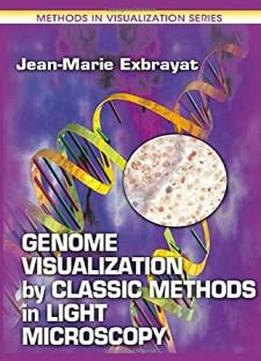
Genome Visualization By Classic Methods In Light Microscopy (methods In Visualization)
by Jean-Marie Exbrayat /
2000 / English / PDF
5.8 MB Download
Visualization of nucleic acids has become indispensable to studying
cells, tissues, and organisms. Certain techniques even permit
quantification of DNA and/or RNA distribution in tissues, but few
current analytical books cover the numerous methods for DNA and RNA
visualization. This book provides insight into several classic
techniques, histological as well as histochemical, that can be used
to appreciate the nucleic acid status of the cell as well as to
provide an overview of RNA and DNA distribution in cells and
tissues.
Visualization of nucleic acids has become indispensable to studying
cells, tissues, and organisms. Certain techniques even permit
quantification of DNA and/or RNA distribution in tissues, but few
current analytical books cover the numerous methods for DNA and RNA
visualization. This book provides insight into several classic
techniques, histological as well as histochemical, that can be used
to appreciate the nucleic acid status of the cell as well as to
provide an overview of RNA and DNA distribution in cells and
tissues.
Genome Visualization by Classic Methods in Light Microscopy begins
with an introduction to DNA and RNA, followed by general
visualization principles. The subsequent chapters describe: how to
prepare tissues for staining; the principles, chemical formulas,
and procedures for nuclear dye, fluorescent dye, and histochemical
methods; directions to observe the products of the stained
reactions; and more. Each protocol is presented as easy-to-follow
directions and the author includes cautionary notes and points to
consider. The final section provides color photographs of various
tissues in which the staining method, fixative, and observations
are noted.
Genome Visualization by Classic Methods in Light Microscopy begins
with an introduction to DNA and RNA, followed by general
visualization principles. The subsequent chapters describe: how to
prepare tissues for staining; the principles, chemical formulas,
and procedures for nuclear dye, fluorescent dye, and histochemical
methods; directions to observe the products of the stained
reactions; and more. Each protocol is presented as easy-to-follow
directions and the author includes cautionary notes and points to
consider. The final section provides color photographs of various
tissues in which the staining method, fixative, and observations
are noted.
A theoretical and practical book, Genome Visualization by Classic
Methods in Light Microscopy allows you to understand which
technique is most useful for your particular problem. Laboratory
protocols are provided for you to follow, chemical structures and
principles are provided for you to understand the technique, and
the book is organized so you can find the necessary information
when needed. This is the essential guide to understanding and
executing visualization techniques for nucleic acids.
A theoretical and practical book, Genome Visualization by Classic
Methods in Light Microscopy allows you to understand which
technique is most useful for your particular problem. Laboratory
protocols are provided for you to follow, chemical structures and
principles are provided for you to understand the technique, and
the book is organized so you can find the necessary information
when needed. This is the essential guide to understanding and
executing visualization techniques for nucleic acids.











